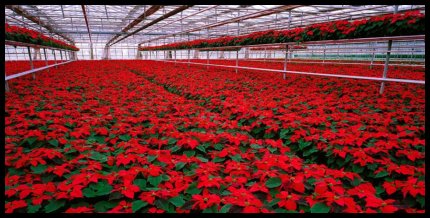
tel: 512-280-1192 Dec 16, 2011
Nursery Notes: 'Tis the season for gift giving, and we have a whole
gift shop brimming with inexpensive and interesting ideas for gard-
eners. Maybe put together some packets of organic or heirloom
seeds? Stepping stones, gazing balls, hats, and windchimes are
some other ideas. On a larger scale we have raised garden frames
made of Eastern red cedar for $60. We also have gift certificates.
Happy Holidays everyone!
______________________________________________________
The holiest plant of the Christmas season may be a raggedy shrub
with peeling bark that seems to grow best in a dusty backyard in
Tempe, Ariz. This is Boswellia sacra, better known as the frankin-
cense tree, writes Michael Tortorello (Herald Tribune) frankincense
cense tree, writes Michael Tortorello (Herald Tribune) frankincense
_______________________________________________________
On Central Texas Gardener (KLRU-TV): Meredith O'Reilly
identifies butterfly and moth caterpillars and their plant larval food.
Sat: noon and 4 p.m. Sun: 9 a.m. or click here: www.klru.org/ctg/

A staggering 75 million poinsettias are sold each Christmas.
Poinsettias: Top of the Pops!
by Chris Winslow
The poinsettia has an assured spot at this time of year as being top of
the ‘potted plant pops.’ In this country alone we buy about 75 million…
and we see them all over the place, in our offices, homes, shops and
restaurants.
No Christmas holiday decorations are complete without some form
of poinsettia. This colorful plant, native to southern Mexico and Central
America, was used by ancient Aztecs as a medicine to reduce fevers.
For this they used the milky white sap from its stems, and also extracted
a purplish dye from the flowering bracts.
Known as nochebuena in Mexico, this fall-flowering ornamental
wouldprobably have remained in the jungle if it wasn’t for Joel Roberts
Poinsett (1770 – 1851), the first U.S. ambassador to Mexico. An
amateur botanist, Poinsett brought this lovely plant (Euphorbia
pulcherrima) back to his home in South Carolina in 1828. Here he
began propagating the “poinsettia” and sending it to his friends and
colleagues throughout the country.
The poinsettia’s leaves and stems grow during the summer months,
and begins to bloom as the days shorten in the fall. The flowering part
of the poinsettia consists of bracts and cyanthia. The bracts are the
large colored leaves which surround the cyanthia or flowers.
In the native plant, the bracts and flowers are very small. With the
modern poinsettia, thanks to hybridization, the colorful leaves have
become much larger and you have a multitude of colors to choose from.
We now have varieties with names like angelica, jingle belles, celebrate,
V-14 glory, freedom, and subjibe. While the most popular color for the
Christmas season is red, you can also buy pink, salmon, white and
bicolor plants.
The poinsettia is pretty easy to care for. It likes to be placed in a well
lit location and watered when it is dry.
If it has a decorative wrap around the pot, remove it when watering,
making sure the plant gets adequate drainage. If you leave its roots
standing in water, the plant will perish. Ideal temperatures are 70
degrees during the day and a slightly cooler night. Too hot a temp-
erature will shorten its bloom time.
In the springtime, poinsettias can be grown as a potted plant or they
can be planted outside in a very protected, sunny location. With any
luck and a very late cold spell next fall, you might get a few blooms.
Happy gardening!
 Visit the website: www.itsaboutthyme.com
Visit the website: www.itsaboutthyme.com Visit the nursery:11726 Manchaca Road, Austin 78748